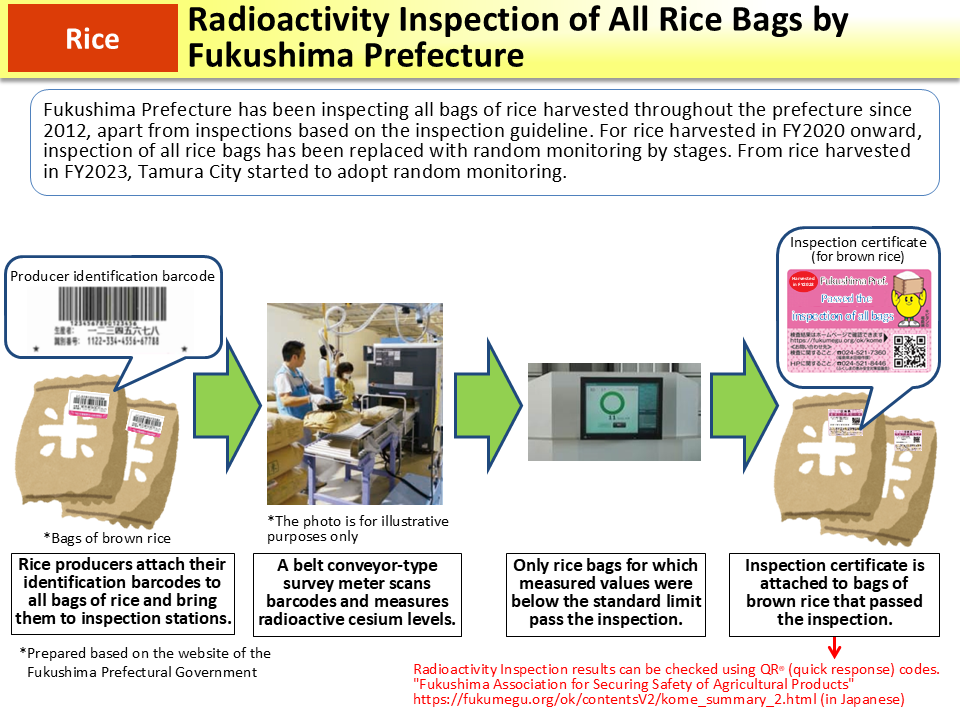Radioactivity Inspection of All Rice Bags by Fukushima Prefecture
Since 2012, Fukushima Prefecture has been inspecting all bags of rice harvested throughout the prefecture, not limited to the areas instructed by the national government, as an initiative by the prefecture. For radioactivity inspections, belt conveyor-type survey meters are used.
For rice harvested in FY2020 onward, inspection of all rice bags is replaced with random monitoring, except for rice harvested in former Areas under Evacuation Orders, etc1. From now on, the inspection method is to be shifted to random monitoring by stages also in former Areas under Evacuation Orders, etc. From rice harvested in FY2022, Hirono Town and Kawauchi Village, and from rice harvested in FY2023, Tamura City started to adopt random monitoring.
Whether the rice has passed the inspection can be checked as follows.
In the case of brown rice packed in a standard 30-kg paper bag that passed the inspection, an inspection certificate is attached to the paper bag. An identification number is entered in each inspection certificate, and inspection results can be checked on the website of the Fukushima Association for Securing Safety of Agricultural Products.
In the case of polished rice, a polished rice label to prove that it is made from brown rice that passed the inspection is attached. However, as this label is attached on a voluntary basis, some polished rice that passed the inspection may be distributed without the label.
(Partially cited from the website of Fukushima Prefecture “Frequently Asked Questions about Radioactivity Inspection of All Rice Bags”: https://www.pref.fukushima.lg.jp/sec/36035b/suiden-zenryozenhukurokensa-faq.html (in Japanese))
- Former Areas under Evacuation Orders, etc.: Tamura City, Minamisoma City, Hirono Town, Naraha Town, Tomioka Town, Kawauchi Village, Okuma Town, Futaba Town, Namie Town, Katsurao Village, Iitate Village, and Kawamata Town (former Yamakiya Village)
- Included in this reference material on March 31, 2013
- Updated on March 31, 2024

